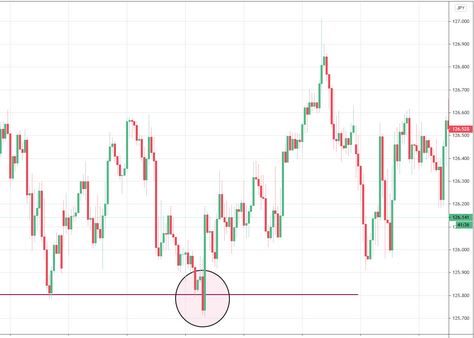In a bear trap, the market initially signals a downtrend, then switches and rises again. If you’ve ever found yourself in one of these situations, you know what it’s like. An indication of a possible downturn in the market is called a bear trap.
Despite its name, the bear trap traps are deceptive. After a short pause, the market continues to grow steadily. The impact of a bear trap varies, but one thing is for certain: it is a trap. We will discuss different trading tools technical traders use to identify bear traps shortly.

Why is it called a bear trap?
Strong buying forces characterize a bullish market, and a falling market characterizes a bearish market. Bullish market conditions refer to markets that are rising with strong purchasing forces. The opposite is bearish market conditions, where the market falls mainly due to a selling spree.
Most traders will lean in one direction or another, so traders trade during both bullish and bearish markets. Traders looking for a downtrend will short-sell and exit trades to ensure profits by looking for price patterns that indicate a downtrend.
Bear traps are situations where an uptrend abruptly ends, leading traders to sell short in anticipation of a downtrend. It happens when traders take on a short position when the asset breaks down, hoping to buy back at a lower price, but the trend reverses and shoots up. They produce a trap followed by a sharp rally.
In the chart, you can easily identify a bear trap. A support line is close by. Trade volume is high, indicating a downtrend. For a trap to be confirmed, the trend must closely hold within five candlesticks, and the trend must rapidly cross over the resistance line.
As a second step, you should confirm that the asset has a reasonable price range. An asset with a wide price range offers more trading opportunities.

How does a bear trap work?
A decline in the price of a financial instrument leads traders to believe there is a downtrend. However, the asset’s value remains flat or, worse, rallies, resulting in a loss for you.
Bullish traders might short when an asset’s price drops, while bearish traders might short to buyback when the price drops to a certain level. But a bear trap reverses the trend in the other direction.
Trading in bear trap
For shorting or short selling, traders commonly use bear traps. You can short a stock by selling it high and then buying it when it falls to make a profit. A bear trap trader can short a stock in a few ways, including borrowing it from the broker on margin.
You sell the stock at current prices when you expect the market to fall to buy it back at a lower price to return it to the broker.
Recapitulation
- Markets of all types can fall victim to bear traps, which are false trend reversals.
- The short-sell strategy deceives traders who open short positions that ultimately lose value.
- A bear trap is common in the stock market, bond market, futures market, and currency market.
- Short traders will be more at risk if they misinterpret the trend during a bear trap than bullish traders.
- Technical charts can help you identify bear traps in advance
- A divergence from a bear trend can indicate a trap if price action signals a possible end to the bear trend
- Place a stop-loss to minimize your losses
- Bull traps also exist in the market but work in the opposite direction.
Bottom line
If you’re inexperienced, you might need help identifying a bear trap on a chart in advance. You will inevitably encounter a bear trap at some point in your trading career. But with practice and the assistance of market indicators, you will learn how to spot it. Apply a stop-loss if you encounter a sudden downtrend and are unsure what to do. This will prevent you from losing more than you intended.


